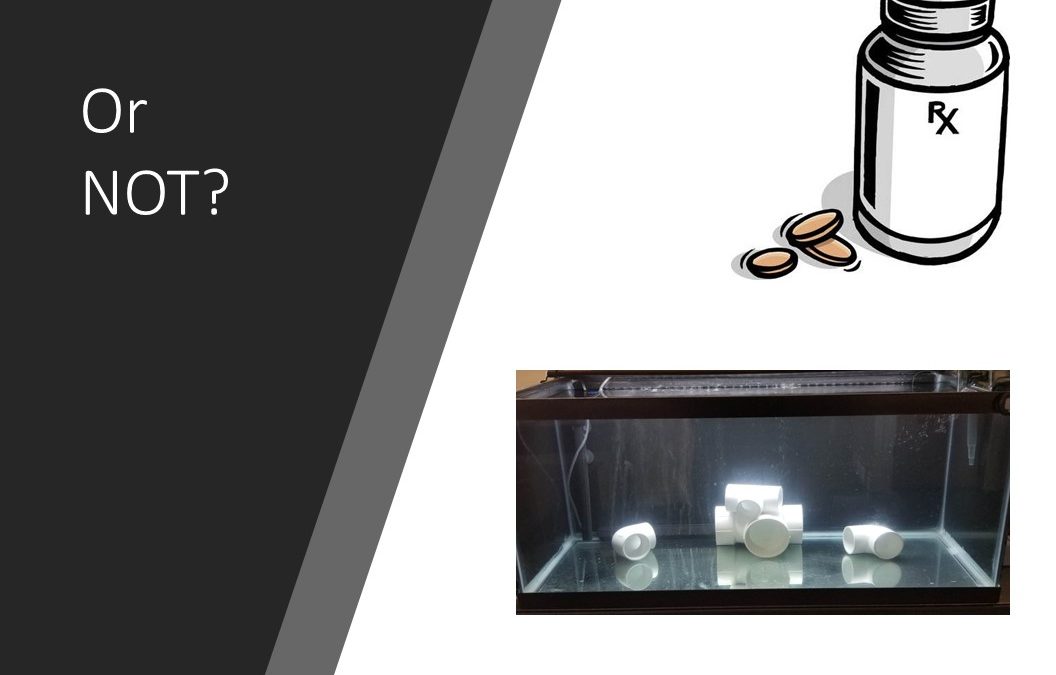Should Medications Be Your First Line of Defense?
submitted by Dena Edwards (Everything Aquatic) 2022
Over the years there has been a trend of reaching for medications without first analyzing the situation to determine if medications are appropriate. And this approach had been leading to medications losing effectiveness over the years. Back in the 80s Metronidazole was a miracle drug as it could treat both protozoa and bacterial disease; however, today it is useless on its own for bacteria and can only treat a small range of parasites.
Our first line of defense starts by following a proper quarantine process with new purchases. It is critical to have enough time to evaluate the overall health of new purchases to avoid spreading disease. I have always held new fish 2-4 weeks minimum in QT. Once I got very busy and fish ended up being in QT for much longer. And I learned a difficult lesson too as at 6 weeks in QT the new fish started to develop a flesh eating bacteria. And by 4 months everything was lost. If I had moved them into my main tank at a month I potentially could have lost everything, not just the new fish. So now, I QT for 3 months minimum.
I am aware that many fish-keepers use medications as a preventative measure; however, most medications are not intended for such use. I am not going to say anything is wrong with this practice, but I will say if medications are not used appropriately then resistance can build up and medications will become less effective. I am also aware that those who import fish will notice over time fish will arrive with certain issues from specific vendors; and they will immediately medicate. This is a different approach in my mind to just tossing in meds to see what sticks or when there is no identified issue. Each of us will follow what we are comfortable doing and need to make educated decisions.
I have been approached by many recently asking for recommendations on what medication to use, yet have no idea what they want to treat. Without first evaluating to identify the root cause there is no way to recommend anything other than moving to a QT and closely monitoring the fish in questions. Anyone who approaches me with this type of situation asking for recommendations on which medication to use I always ask for the following information:
What are the current water parameters? Specifics are required to determine if the tank is cycled and being maintained with enough water changes
Ask how often water changes are done and the water volume. There is nothing better for freshwater fish than fresh water. Same is true on a smaller scale for saltwater environments. Doing water changes not only removes waste, but it also replenishes minerals that are lost to growing fish and to hungry plants.
How long have the fish been in your tank? We they quarantined?
What tankmates are in the tank? Need to rule out incompatibility in species, such as keeping long finned fish with notorious nippers
With the case of fin rot, it is very different from environmental damage. Rot is often noticed at the fin tips and will gradually eat away at the fins; plus the fin edges will be very dark in most cases. Environmental damage will appear as ripped or torn edges or shredded finage. And when fins begin to repair themselves they will first look clear or white on the edges and many think this is fin rot when it is actually fin growth. Any time there is no sign of actual rot, the first approach is to do nothing more than offering a variety of high quality foods, doing small daily water changes and sometimes adding botanicals to add tannins to the tank. And in 1-2 weeks the fins will repair themselves.
We don’t take antibiotics for a leg cramp or a migraine, so why would we do so for our pets?


Great article! Thanks Dena! A winner in deed!👍🏻❤️